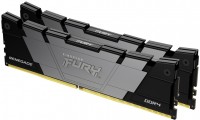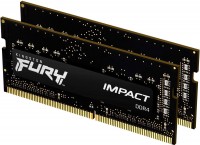RAM Kingston Fury series Beast (high performance)
Kingston Fury Beast
In February 2021, giant Hewlett-Packard bought the rights to the HyperX gaming brand and all its products from Kingston. As a result of the deal, Kingston had to hastily shovel all its products and arrange a massive rebranding, which is why the HyperX Fury RAM, popular among gamers, changed its sign to Kingston Fury Beast. At one time, it was the Fury series that gained users a reputation for universal memory, which costs adequate money, accelerates well and is not capricious in the process.
 |
Another beauty of Fury's memory is its reliability and reliability. As aptly noted in a review on one popular channel, these are components from the “bought and forgot” category: XMP profiles are picked up without any problems at all, selected memory chips lend themselves well to overclocking and are not particularly capricious in the process, metal heat exchangers effectively remove excess heat, and the built-in illumination supports most popular lighting systems (note: Asus Aura Sync, Gigabyte Fusion and MSI Mystic Light). In order not to lose continuity, Kingston decided to use the same time-tested memory chips and did not change anything in appearance, leaving the same textured black heat exchangers with high combs and backlighting at the end. In fact, only the name has changed.
Immediately after the news of the rebranding, the Kingston Fury Beast quickly took the lead in store windows. The range of the series starts with modest 4 GB sticks, among which you can find both options from the outdated DDR3 format, and the more familiar DDR4 class memory. In the middle of the list are single sticks and double sets of 8 and 16 GB. The frequency range varies from 1866 to 5200 MHz, and the backlight occurs every other time and is marked with the abbreviation RGB in the name. Rounding out the lineup are Fury Beast overclocking kits ranging in size from 32GB to 128GB, designed with high performance gaming PCs and workstations in mind that need massive amounts of RAM.


